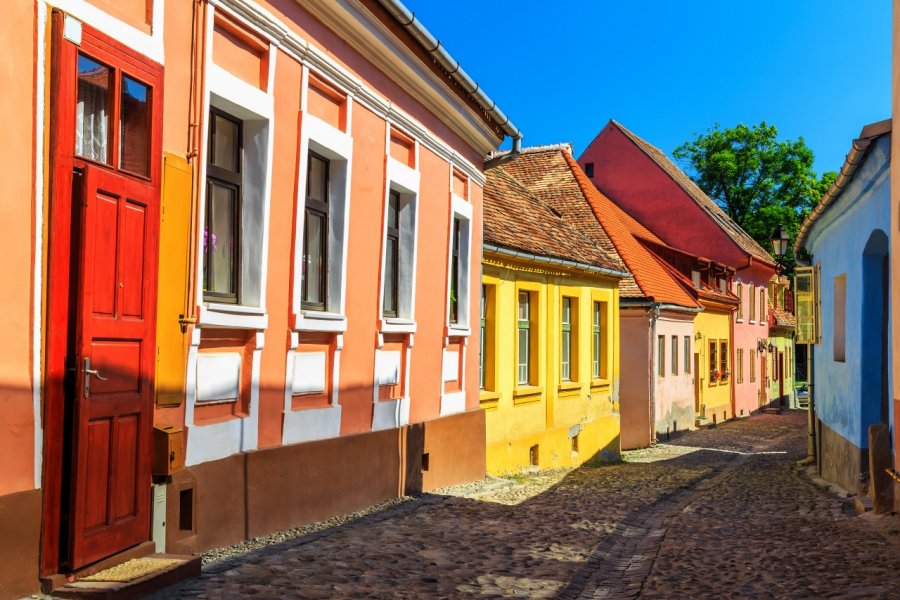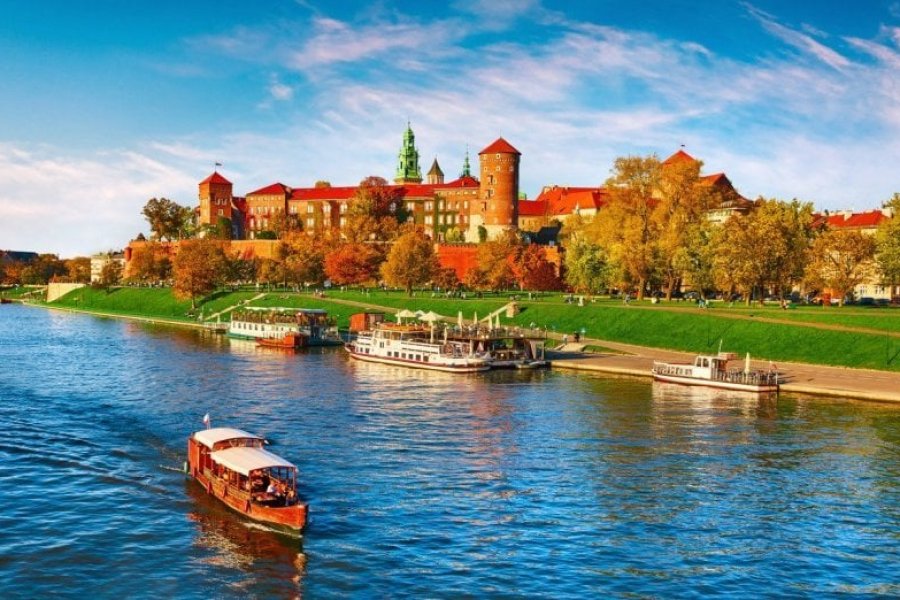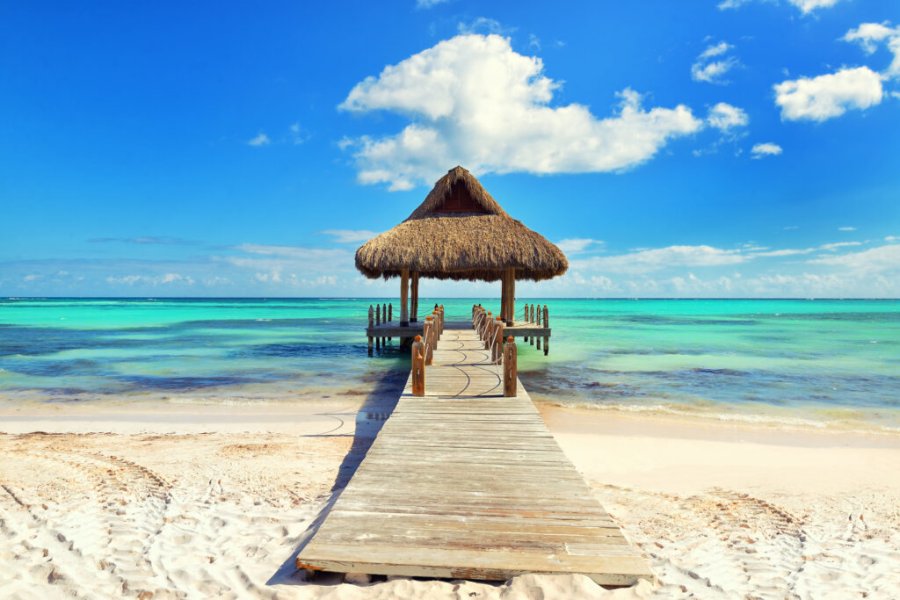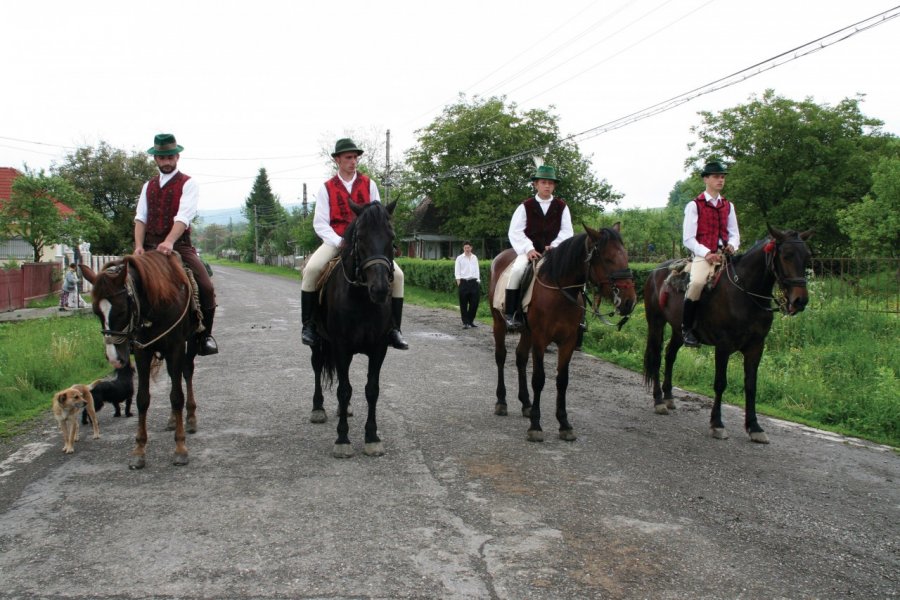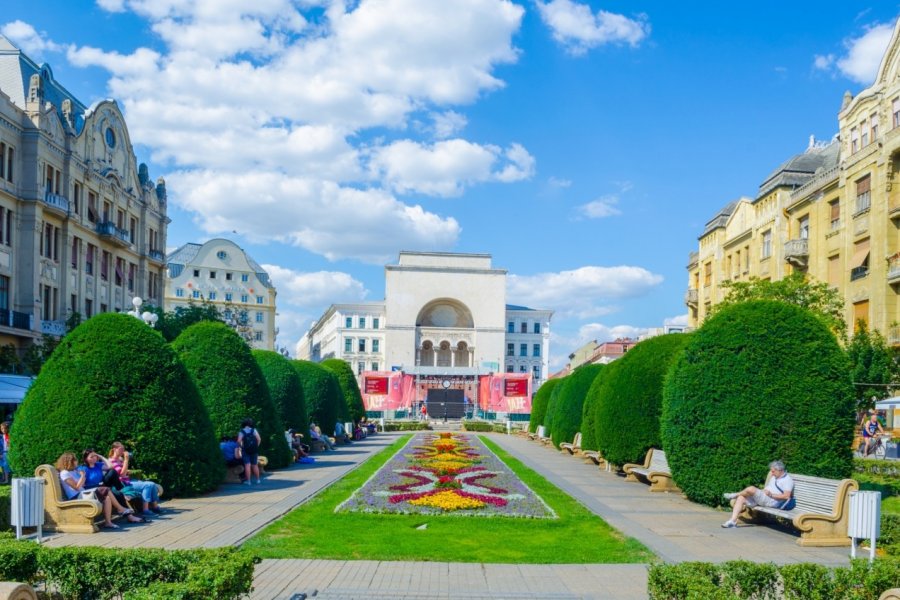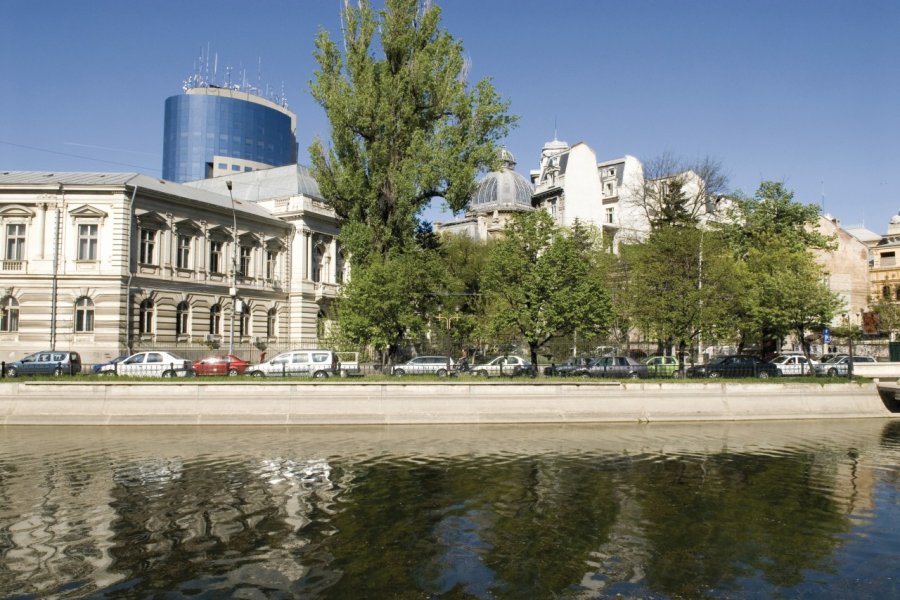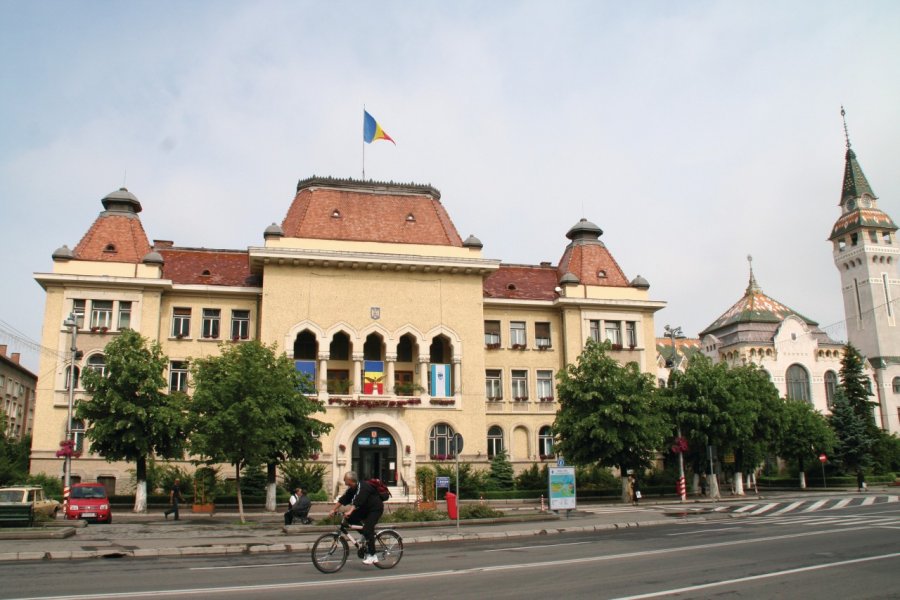Travel guide Romania
Often subject to many prejudices, Romania is in reality a destination little known to the general public, so when we talk about it, the images that come to mind are very limited. Between Ukraine and Bulgaria, with Hungary to the west and the Black Sea to the east, its vast territory is nevertheless made up of a mosaic of landscapes steeped in myths and traditions as old as unsuspected... The Romanian tourist guide aims to restore some of this unique charm by taking you on a journey of discovery through the four corners of the country, starting with Bucharest, a frenetic and lively capital, at the crossroads of the old and the new. Here, trendy addresses are flourishing at high speed and there are countless opportunities for entertainment. Nevertheless, Bucharest remains, like the country, proud of its strong cultural roots, something that can be measured by visiting the medieval and romantic cities of Sighişoara, Braşov or Sibiu in Transylvania, or the painted monasteries of the regions of Maramureş and Bukovina. Nature is powerful in Romania, from the steep and magical Carpathian mountain range to the beaches of the Black Sea. And why not take a cruise on the Danube? Between gleaming sedans and horse-drawn carts, at the crossroads of Western, Byzantine, Slavic and Eastern influences, far from mass tourism, Romania, its cities, its countryside and legends is the promise of a total change of scenery, where all your memories remain to be created!
What to see, what to do Romania?
-
Book an activity
-
Customized travel
- The most beautiful cities Romania
When to go Romania ?
When to go to Romania? In principle, the best time to visit Romania is from May to the end of October. Summer remains the major tourist season for Romanian and foreign visitors. The beaches on the coast are very crowded, but the bathing conditions are good. In the interior of the country, in Maramureş, Transylvania and Moldova, the countryside is really beautiful and the weather is very pleasant. In Romania, the mid-season remains mild and the nature colorful. The conditions are then optimal for hiking and cultural visits. In winter, despite the harshness of the climate, the snow reveals magical landscapes and a traditional character that is very exotic, especially during the Christmas and New Year's holidays. It is also the time to ski down the cheapest slopes in Europe, to contemplate beautiful mountain landscapes and snow-covered villages. When to go to Romania? All year round!
Suggested addresses Romania
Travel Romania
-
Find a hotel
-
Car Rental
-
International e-SIM package
-
Find a local agency
La Roumanie dispose d'innombrables richesses. Afin de découvrir en profondeur la beauté de son patrimoine, de ses paysages, l’accueil de ses habitants, il est préférable d’adapter son parcours par rapport au temps dont on dispose. Pour un séjour d’une semaine, appréciez pleinement les charmes d’une région. Si vous disposez de deux semaines, cela vous laissera la possibilité de découvrir trois à quatre régions parmi les plus remarquables. Un séjour de trois semaines est la durée idéale pour prendre son temps et se permettre des détours. Si vous êtes dépendant des transports en commun, séjournez quelques jours dans un même lieu et rayonnez dans les alentours en appréciant les excursions et balades qui s’offrent à vous. Si vous louez un véhicule, au départ de Bucarest, empruntez les routes à travers les Carpates pour découvrir des sites d’exception hors des sentiers battus.
Find unique Stay Offers with our Partners
How to go Romania
How to go alone
To reach Bucharest from Western Europe, a round-trip air ticket will cost you between 80 and 300 €. Please note that the price variation depends on the airline you use and, above all, on the reservation deadline. In order to get good prices, it is essential to book well in advance. Remember to buy your tickets six months before departure! You should also know that for low cost flights, you often have to add many fees.
How to go on a tour
Of course, Romania is not a very touristy destination. However, there are specialists who offer organized trips to discover its hidden treasures. One can choose various itineraries centered on a particular Romanian region: Bucovina and Transylvania, the Danube delta, the Carpathians...
How to get around
There are many ways to get around Romania. If you have little time and a small budget and want to visit the whole country, you can opt for some domestic flights. Otherwise, the bus network works well and is inexpensive, as are the rail services. For more autonomy, you can also choose to rent a car locally. Finally, you will have to use the river transport to travel through the three arms of the Danube Delta.
Featured articles Romania
Discover Romania
Romania is a rich country. Of course, its recent history has not spared it: the trying communist period was followed by a difficult transition, forcing many of its inhabitants to leave. Today, this astonishing country offers its visitors simple and extraordinary treasures. Rich in religious and popular traditions, it comes alive with a special fervour at Easter and Christmas. An attachment to its roots that is also expressed through a preserved folklore and craftsmanship, reflecting a diverse population. Rich in legends, nourished by a decor worthy of fairy tales, Romania is a fertile breeding ground for the imagination, the setting for the myth of Dracula. Still rich in unspoiled nature, this wild land is home to an abundance of flora and fauna. Finally, rich in a tumultuous history, at the crossroads of civilizations, it reveals a precious heritage, made up of colourful cities, monasteries and churches, castles and fortresses.
Pictures and images Romania
The 12 keywords Romania
1. Cart

They're an emblem of the Romanian countryside. Although their numbers are declining, you'll still come across many of them on the country's roads. Pulled by horses adorned with red pompoms, loaded with hay or farm equipment, the wooden carts(căruță) symbolize the small-scale, unmechanized farming that still exists in Romania.
2. Ciorbă

Influenced by Turkish chorba and Russian borsch, ciorbă is a flagship dish in Romanian cuisine. It is available in a thousand ways, always full of flavour: with vegetables, meatballs, beans, fish... not forgetting the famous ciorbă from burtă, with tripe. We often add borș, fermented wheat bran that gives a sour taste.
3. Diaspora
Romania has lost about 4 million inhabitants since 1989, from 23 million to less than 20 million. Every family has at least one member who has gone to work abroad, mainly in Italy and Spain, in search of better wages. This diaspora, which contributes strongly to the economy, is making a big comeback for the holidays and during the summer.
4. Dor
Close to the Portuguese saudade, this word, which has no equivalent in French, refers to a state of mind, a complex feeling, a mixture of nostalgia, melancholy, joy, lack, yearning and pain. The doina, a word from the same family, is a traditional song, a kind of improvised lyrical melody, very representative of the Romanian soul.
5. Dracula

The famous vampire lives in the Romanian Carpathians: it is there that his creator, the writer Bram Stoker, located his castle. He was inspired by a 15th-century voivode, Vlad Țepeș, who had a reputation for bloodthirsty vampires, but also by the local beliefs of the time around the ghosts, the strigoi. For Romanians, Dracula is above all a tourist attraction.
6. Francophonie
Romania and France forged a strong relationship in the 19th century, when part of the Romanian elite came to study in Paris. French remains the second foreign language taught and many Romanians know a few words about it. A minority speaks it fluently. Romania is a member of the International Organisation of the Francophonie.
7. Hospitality
It's no legend: Romanians hold high the values of hospitality and are often very welcoming, especially in the countryside where warmth and generosity are the order of the day. You'll always find someone to show you the way, help you out if you need it, enthusiastically strike up a conversation, or even offer you a țuică!
8. Ia
This is the name given to the traditional feminine blouse. Finely embroidered, it is adorned with traditional motifs of symbolic significance.Ies have come back into fashion in recent years, in a modernized form. Many Romanian women have them in their wardrobe and wear them proudly. The ia even has its own day, celebrated on June 24.
9. Manele
This very popular musical genre developed from the 1990s onwards in the Roma community. It draws its roots from the traditional lăutari and mixes oriental influences, disco, rap or electro. The lyrics, simple and vulgar, talk about money, women and sex. Among the stars of the manele are Florin Salam and Nicolae Guță.
10. Minorities
Hungarians and Saxons in Transylvania, Lipovenes in the Danube Delta, Turks and Tatars in Dobrogea, Houtsulas in Bukovina and Roma all over the country... At the crossroads of the Slavic, European and Eastern worlds, Romania has a diversity of minorities, which cultivate their particularities and contribute to give it its character.
11. Saline
Romania's subsoils are brimming with salt. For centuries, salt has been extracted from vast mines: many of these have been converted to welcome the public, who come to explore these gigantic underground galleries, enjoy their leisure facilities (sports grounds, bowling, games...) and take salt air cures.
12. Țuică

It's the national drink! This plum-based brandy is served in many restaurants. In the countryside, many still distill their own țuică (known as "tssouika") and it's not uncommon to be offered some. Be careful, it's strong! There are also variants, more full-bodied(palincă, horincă) or fruity(afinată with blueberry...).
You are from here, if...
You'll be barbecuing(grătar) in the great outdoors or on the roadside at the slightest opportunity, packing a whole day's worth of gear: folding tables and chairs, deckchairs, a cooler full of beers and provisions... Not forgetting the indispensable mici, those little skinless minced meat sausages. All this with music playing at full volume on the car radio.
You're overtaking as a car appears on the horizon. Or, if you're the car opposite, you brake without too much panic to give the other car time to pull over.
You make the sign of the cross as you pass a church. Or you're not surprised to see others doing it.
In winter, you walk with ease on icy sidewalks, without fear of falling.
You're quick to strike up a conversation with your compartment-mates on the train, and happy to share your cakes and provisions.
You have family in the country and family abroad.

